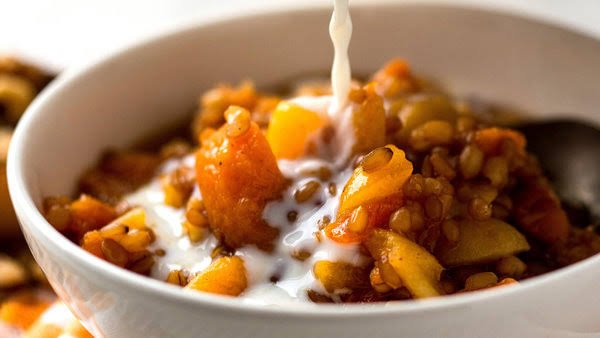Ancient Grain in a Healthy Cereal
Introduction
Ancient grains have been cultivated for thousands of years and are making a comeback as a healthy cereal option. These grains, which include quinoa, amaranth, spelt, and millet, are packed with nutrients and offer numerous health benefits. Their resurgence in popularity is due to their high fiber content, rich nutrient profile, and potential to improve overall health.
What Are Ancient Grains?
Ancient grains are grains that have remained largely unchanged over the centuries. Unlike modern wheat and rice, these grains have not been extensively hybridized or genetically modified. This category includes grains such as farro, barley, teff, and sorghum. They are often more nutrient-dense than their modern counterparts, offering a rich source of vitamins, minerals, and antioxidants.
Health Benefits of Ancient Grains
Incorporating ancient grains into your diet can provide several health benefits:
- High in Fiber: Ancient grains are an excellent source of dietary fiber, which can aid in digestion and promote a feeling of fullness.
- Rich in Nutrients: They are packed with essential vitamins and minerals, such as B vitamins, iron, magnesium, and zinc.
- Antioxidant Properties: Many ancient grains contain antioxidants that help protect the body from oxidative stress.
- Gluten-Free Options: Some ancient grains, like quinoa and amaranth, are naturally gluten-free, making them suitable for those with gluten sensitivities or celiac disease.
Ancient Grains in Modern Diets
Adding ancient grains to your daily diet is easier than you might think. They can be used in a variety of ways, from breakfast cereals to side dishes and main courses. Here are a few suggestions:
- Quinoa Porridge: Start your day with a warm bowl of quinoa porridge, sweetened with honey and topped with fresh fruits and nuts.
- Amaranth Granola: Make a batch of homemade granola using amaranth, oats, and your favorite seeds and dried fruits.
- Spelt Pancakes: Whip up a batch of fluffy spelt pancakes for a nutritious and delicious breakfast.
Ancient Grains vs. Modern Grains
One of the key differences between ancient and modern grains is their nutritional profile. Modern grains have often been selectively bred for higher yields and easier processing, sometimes at the expense of their nutritional content. Ancient grains, on the other hand, have retained their original nutrient density. For example, spelt contains more protein and fiber than modern wheat, while teff is rich in calcium and iron.
How to Choose Healthy Cereals with Ancient Grains
When selecting a cereal that includes ancient grains, it’s essential to read the label carefully. Look for cereals that list ancient grains as the primary ingredient and avoid those with added sugars and artificial additives. Whole grains should be at the top of the ingredient list, ensuring you get the most nutritional benefits.
Popular Ancient Grains for Healthy Cereals
Several ancient grains are particularly well-suited for inclusion in healthy cereals:
- Quinoa: Known for its high protein content and complete amino acid profile.
- Amaranth: Rich in protein and fiber, with a slightly nutty flavor.
- Millet: A versatile grain that is easy to digest and naturally gluten-free.
- Buckwheat: Despite its name, buckwheat is gluten-free and high in antioxidants.
FAQs
What are the best ancient grains to include in a healthy cereal? Quinoa, amaranth, millet, and buckwheat are among the best ancient grains for healthy cereals due to their high nutrient content and versatility.
Are ancient grains gluten-free? Not all ancient grains are gluten-free, but many are. Quinoa, amaranth, millet, and buckwheat are excellent gluten-free options.
Can ancient grains help with weight loss? Yes, ancient grains can aid in weight loss due to their high fiber content, which promotes satiety and helps control appetite.
How do ancient grains compare to modern grains in terms of nutrition? Ancient grains often have higher levels of protein, fiber, vitamins, and minerals compared to modern grains, making them a more nutrient-dense choice.
Are ancient grains suitable for people with celiac disease? Certain ancient grains like quinoa, amaranth, and millet are suitable for people with celiac disease as they are naturally gluten-free.
How can I incorporate ancient grains into my breakfast routine? You can incorporate ancient grains into your breakfast by making quinoa porridge, amaranth granola, or spelt pancakes. Adding them to smoothies or yogurt is also a great option.
Conclusion
Ancient grains offer a wealth of health benefits and can be a valuable addition to a healthy cereal. Their rich nutrient profile, high fiber content, and versatility make them an excellent choice for anyone looking to improve their diet. By choosing cereals that feature these ancient grains, you can enjoy a delicious and nutritious start to your day.

